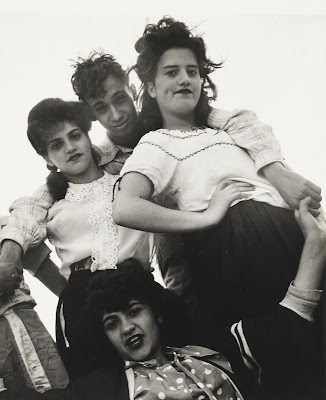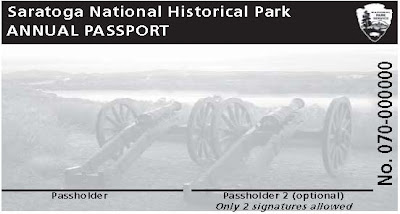 Drawing on the depth of two great Photo League museum collections, The Jewish Museum in New York City and the Columbus Museum of Art in Ohio are collaborating on an exhibition of over 140 vintage photographs. The Radical Camera: New York’s Photo League, 1936-1951, a formidable survey of the group’s history, its artistic significance, and its cultural, social and political milieu, will premiere at The Jewish Museum from November 4, 2011 through March 25, 2012. The Radical Camera exhibition will then travel to the Columbus Museum of Art, Columbus, OH (April 19 – September 9, 2012)- the Contemporary Jewish Museum, San Francisco, CA (October 11, 2012 – January 21, 2013)- and Norton Museum of Art, West Palm Beach, FL (February 9 – April 21, 2013).
Drawing on the depth of two great Photo League museum collections, The Jewish Museum in New York City and the Columbus Museum of Art in Ohio are collaborating on an exhibition of over 140 vintage photographs. The Radical Camera: New York’s Photo League, 1936-1951, a formidable survey of the group’s history, its artistic significance, and its cultural, social and political milieu, will premiere at The Jewish Museum from November 4, 2011 through March 25, 2012. The Radical Camera exhibition will then travel to the Columbus Museum of Art, Columbus, OH (April 19 – September 9, 2012)- the Contemporary Jewish Museum, San Francisco, CA (October 11, 2012 – January 21, 2013)- and Norton Museum of Art, West Palm Beach, FL (February 9 – April 21, 2013).
Artists in the Photo League were known for capturing sharply revealing, compelling moments from everyday life. Their focus centered on New York City and its vibrant streets – a shoeshine boy, a brass band on a bustling corner, a crowded beach at Coney Island. Many of the images are beautiful, yet harbor strong social commentary on issues of class, child labor, and opportunity. The Radical Camera exhibition explores the fascinating blend of aesthetics and social activism at the heart of the Photo League.
The innovative contributions of the Photo League during its 15-year existence (1936-1951) were significant. As it grew, the League would mirror monumental shifts in the world starting with the Depression, through World War II and ending with the Red Scare. Born of the worker’s movement, the Photo League was an organization of young, idealistic photographers who believed in documentary photography as an expressive medium and powerful tool for exposing social problems. It was also a school with teachers such as Sid Grossman, who encouraged students to take their cameras to the streets and discover the meaning of their work as well as their relationship to it. The League had a darkroom for printing, published an acclaimed newsletter called Photo Notes, offered exhibition space, and was a place to socialize, especially among first-generation Jewish-Americans.
The first museum exhibition in three decades to comprehensively look at the Photo League, The Radical Camera reveals that the League encouraged a surprisingly broad spectrum of work throughout extraordinarily turbulent times. The organization’s members included some of the most noted photographers of the mid-20th century – W. Eugene Smith, Weegee, Lisette Model, Berenice Abbott and Aaron Siskind, to name a few. The Photo League helped validate photography as a fine art, presenting student work and guest exhibitions by established photographers like Eugene Atget, Henri Cartier-Bresson, and Edward Weston, among others.
These affecting black and white photographs show life as it was lived mostly on the streets, sidewalks and subways of New York. Joy, playfulness and caprice as well as poverty and hardship are in evidence. In addition to their urban focus, Leaguers photographed in rural America, and during World War II, in Latin America and Europe. The exhibition also addresses the active participation of women who found rare access and recognition at the League.
The Radical Camera presents the League within a critical, historical context. Developments in photojournalism were catalyzing a new information era in which photo essays were appearing for the first time in magazines such as Life and Look. As time went on, its social documentary roots evolved toward a more experimental approach, laying the foundation for the next generation of street photographers. One of the principal themes of the exhibition is how the League fostered a multifaceted and changing identity of documentary photography. “A mixture of passion and disillusionment characterizes the Photo League’s growth, which led photographers away from objective documentary images and toward more subjective, poetic readings of life,” said Mason Klein, exhibition co-curator and a curator at The Jewish Museum. “The tenets of truth in documentary photography laid down by League members were also challenged by them and ultimately upended by members of the New York School,” he added. Catherine Evans, exhibition co-curator and a curator of photography at the Columbus Museum of Art, observed that “This museum partnership is an extraordinary opportunity to showcase two in-depth collections. Because the images continue to have relevance today, it is especially important that the exhibition will be seen in four U.S. cities, reaching as broad an audience as possible.”
In 1947, the League came under the pall of McCarthyism and was blacklisted for its alleged involvement with the Communist Party. Ironically, the Photo League had just begun a national campaign to broaden its base as a “Center for American Photography.” Despite the support of Ansel Adams, Beaumont and Nancy Newhall, Paul Strand and many other national figures, this vision of a national photography center could not overcome the Red Scare. As paranoia and fear spread, the Photo League was forced to disband in 1951.
The exhibition has been organized by Mason Klein, Curator of Fine Arts, The Jewish Museum, and Catherine Evans, William and Sarah Ross Soter Curator of Photography, Columbus Museum of Art.
Photo: Sid Grossman, Coney Island, c. 1947, gelatin silver print. The Jewish Museum, New York. Courtesy Howard Greenberg Gallery.
 Linda Cohen and Peg Masters, both descendants of 19th-century pioneer settlers of the Old Forge region, have written Old Forge and The Fulton Chain of Lakes (Arcadia Publishing, $21.99) the latest Adirondack edition in the Images of America series. Together they compiled over 200 images from around the area, many seldom seen.
Linda Cohen and Peg Masters, both descendants of 19th-century pioneer settlers of the Old Forge region, have written Old Forge and The Fulton Chain of Lakes (Arcadia Publishing, $21.99) the latest Adirondack edition in the Images of America series. Together they compiled over 200 images from around the area, many seldom seen.







